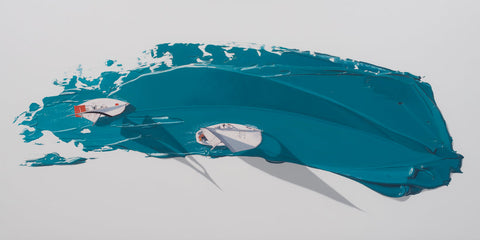How do you interpret modern art? To get the most out of it, you need to look at the historical context, get familiar with the artist’s life, and ponder over their intentions or any symbolism that may be involved. If you’ve got a really keen eye, you can analyze the painting’s structural and technical details to identify how closely it follows the techniques characteristic of its school. All about that and more on how to interpret modern art in today’s article.
Understand Each Art Movement
If you want to learn how to look at modern art, the first thing to do would be to learn about its individual subgenres. One of the key aspects of modernism involved leaving the old behind and making way for depictions of life in a more egalitarian society. This was a great novelty in the world of art, and with more voices engaged in discussion, new schools and approaches emerged at a much faster pace.
Learning what makes each movement unique is key. Look for characteristic technical details that define the style. Shapes, color schemes, or even brush strokes can tell you a whole story about the painting if you know where to look.
Consider the History
By definition, modern art spans the period between the 1850s and 1960s. But, consider this: What does Jackson Pollock’s Abstract Expressionist work share with Edgar Degas’s Impressionist depictions of dancers? Other than both artists belonging to the overarching period of modernism, not much. These two artists lived not just on two different continents – the Earth they walked every day was completely different as well because of many significant historical events.
Art and history are inextricably connected. Think of it this way: whenever an artist creates a painting, history serves as their canvas, and each brushstroke reflects the events and zeitgeist of the era. To understand modern art, you need to study its historical context closely.
Learn About the Artist
Of course, it isn’t just about the surrounding circumstances. At the center of it all stand the artists themselves, with their motivations and emotions that drove them to pour their hearts and souls into their work. In contrast to preceding movements, modernism granted more freedom of expression to artists. Gone were the unwritten rules stipulating that art should focus exclusively on the beautiful and venerable, lest the artist risk being labeled an upstart or mere pretender.
Contextualizing the work within the artist’s life, emotions, and how they interacted with their reality could hint toward their inspirations. In practice, this is a great tip to employ when visiting an art gallery or museum. Spend an extra couple of minutes to read the plaques and information cards, and it might just grant you the insight necessary to extract more meaning and connect with the piece.

In The Blue 24" x 48" oil on aluminum - Erik Johnson
Seek Symbolism Within the Art
The trend to experiment and bury meaning under layers of symbolism is omnipresent throughout many modernist schools, such as Surrealism, Dadaism, or Absurdism. More often than not, the symbols and metaphors employed by artists are key to understanding the piece. If you follow the previous tips, becoming familiar with the artists’ lives, their schools, and history, you’ll be well primed to spot these symbols and decipher the meaning that much easier.
Feel Your Emotions, But Don’t Force Them
By now, you should have a solid foundation of how to approach modern art. The expanded freedoms in terms of expression and enjoyment of art meant a range of new emotions and perspectives that challenged norms and ventured outside the proverbial box. The shift in the artist-viewer relationship encourages consumers to think, feel, and reflect. There is but one small caveat.
As we mentioned, modern art encompasses a huge breadth of different artistic directions, from Romanticism to Pop Art and beyond. You’re unlikely to find all of these styles appealing enough to warrant investigating the meaning behind each work and reflecting upon it – and that’s okay! As humans, we’re inclined to react with aversion toward what we don’t understand. If this happens to you, don’t fret. Not everything has to make emotional or logical sense.
Realize No Interpretation Is Wrong
Great art provokes introspection and thought, and no two people think alike. Coming away with different conclusions or impressions is precisely what makes modern art great – even though you haven’t created it, in a way, you can still make it your own.
The Takeaway
How to look at modern art? A simple answer doesn’t exist, but to put it all together: context matters most. Learn as much as your curiosity will allow you, from history through the artists’ lives, their schools, and their techniques to the symbols embedded in their art. You’ll be surprised at how much more meaning lies hidden in plain sight. Understanding art isn’t as complex as it may seem, and we hope your next museum visit will be that much more fruitful!
If you’re keen to learn more about modern art, take a look at this article: 8 of the Most Famous Modern Artists.
